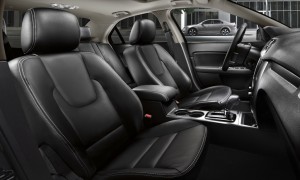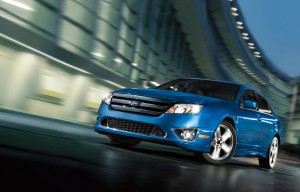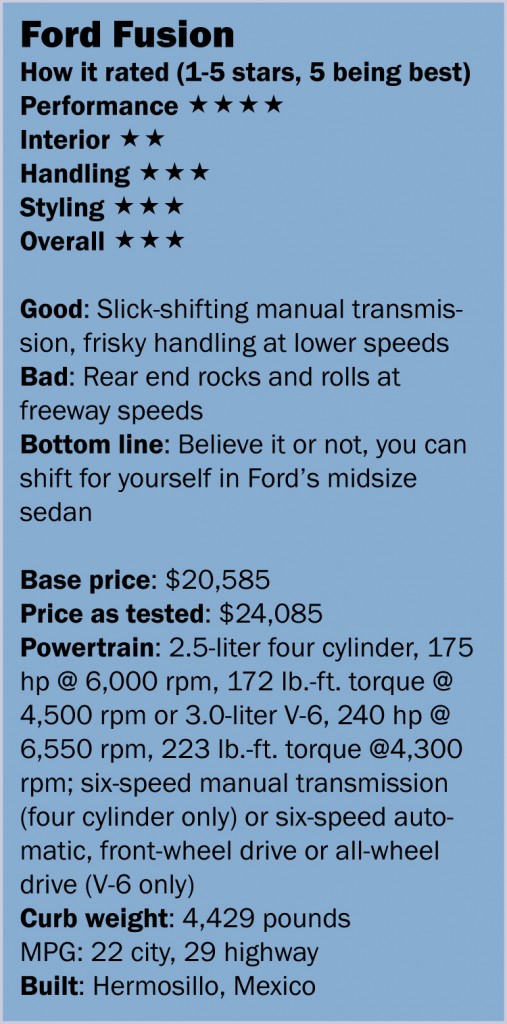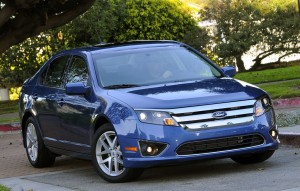A lot of folks might be surprised to find out that this car exists.
Manual transmissions are growing increasingly rare and in fact, the reasons to buy them are diminishing. In the old days, traditional manual transmissions were more efficient than regular automatic transmissions. But the new breed of automated manual transmissions even eliminates the benefit of efficiency. Even the Fusion’s regular six-speed auto beats this Fusion SE’s highway fuel economy number.
Manual transmissions generally do enjoy one distinction: They’re cheaper to build. Choosing to shift for yourself will save you $895 over the cost of an automatic Fusion.
But beyond that, there is still a dedicated bunch of drivers who enjoy rowing their own gears. And as long as the rest of the world continues to prefer the three-pedal arrangement, they’ll still be offered here.
So, it’s true, you can get a Ford Fusion with a six-speed manual transmission. No, you can’t get the rorty Sport with its powerful 265-horsepower 3.5-liter V-6 with shift-it-yourself gears, and in fact, not even with the regular 3.0-liter V-6 that is also an option.

The Ford Fusion, shown here with a six-speed automatic transmission, is also available with a shift-yourself six-speed standard shift.
The manual is only available with the base 2.5-liter four cylinder. Most people will still choose the six-speed automatic, but those who want a clutch pedal can still get it.
The transmission works well. The clutch is smooth and easy to engage. The transmission has silky shift action, although a shorter shift lever would be sportier.
The transmission is a good partner for the 175-horsepower 2.5-liter four cylinder. The engine is smooth and loves to rev right up to its 6,500 redline. It has enough power to be fun, but it’s by no means crazy fast.
Fuel mileage is also good, but the SE’s bigger wheels – 17-inchers are standard, but the test car came with 18s – cost it fuel mileage. The base S with a manual transmission is rated at 22 city and 32 highway, but the SE loses 3 mpg on the freeway. A Fusion four cylinder with an automatic – the way most Fusions are ordered – is rated at 22 city and 30 highway. We saw 27 mpg on mostly freeway and rural two-roads. For 2012, the manual is only available in the base S model.

The Fusion with a sport appearance package has good moves around town, but it tends to wander on the freeway.
It’s too bad the suspension tuning isn’t right. While the SE willingly attacks corners with verve, the handling breaks down on the freeway. The car tends rock from side to side, especially in the rear. It feels unstable and the car wanders.
The electric power steering could use more effort, but it communicates what’s going on at the tires well enough.
The test car came with what Ford calls an appearance package that includes aggressive 225/45 18-inch tires on cool alloy rims. The low-profile tires definitely contribute to the confidence the car has pressing hard in corners. But suspension tuning is a difficult task for even the best automakers. Throw in a wildly different set of tires and that tuning becomes even more tricky. While Ford’s engineers made the tires work in the corners, the car doesn’t work on the freeway.
Inside the SE features racy silver piping and stitching on the seats accenting the black seats. The seats are comfortable and supportive, if not quite up to the car’s level of grip in corners.
 Despite the tires’ short sidewalls, the ride is still very good.
Despite the tires’ short sidewalls, the ride is still very good.
The Fusion’s interior is starting to show its age. While Ford’s new interior pieces – such as the changeable instrument panel, center touchscreen and revamped steering wheel buttons – are making their way through its lineup, most of those pieces haven’t made it to the Fusion yet.
The center console has lots of tiny buttons, some of which are located low on the console, a long reach while driving. While the interior has a lot of soft-touch surfaces, the look is somewhat dated. How quickly automotive styling changes these days. At least Ford has finally given the cruise control a proper cancel button.
Of course, Sync is very cool, but do yourself a favor: Don’t play with Sync in one of Ford’s more expensive cars because you won’t believe everything it controls that it won’t work in lesser Fords. For example, Ford’s new Edge has an optional infotainment system that uses MyFordTouch to control climate, navigation and all aspects of the entertainment system. The Fusion’s system only works with your phone and digital media player.
The rear seat is comfortable and has excellent space. There’s toe-wiggling room under the front seats, even the power-operated ones in the test car.
On the outside, the Fusion still looks up to date, although somewhat basic. No swoops or wild lines here.
Fusions start at $20,580, including destination charges. The SE starts at $22,440. Add in a $855 package that includes a sunroof and Sync, the appearance package ($895) and illuminated door plate and aluminum pedals ($195) bringing the as-tested price to $24,085.
Yes, you can get a stick shift in your Fusion. And it doesn’t have to be a simple economy special version either. Order it with the right options, and you can get a manual-transmission Fusion that does a reasonable impersonation of a sports sedan. Just make sure your test drive includes time on the freeway to see if its wandering ways bother you.

